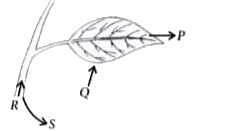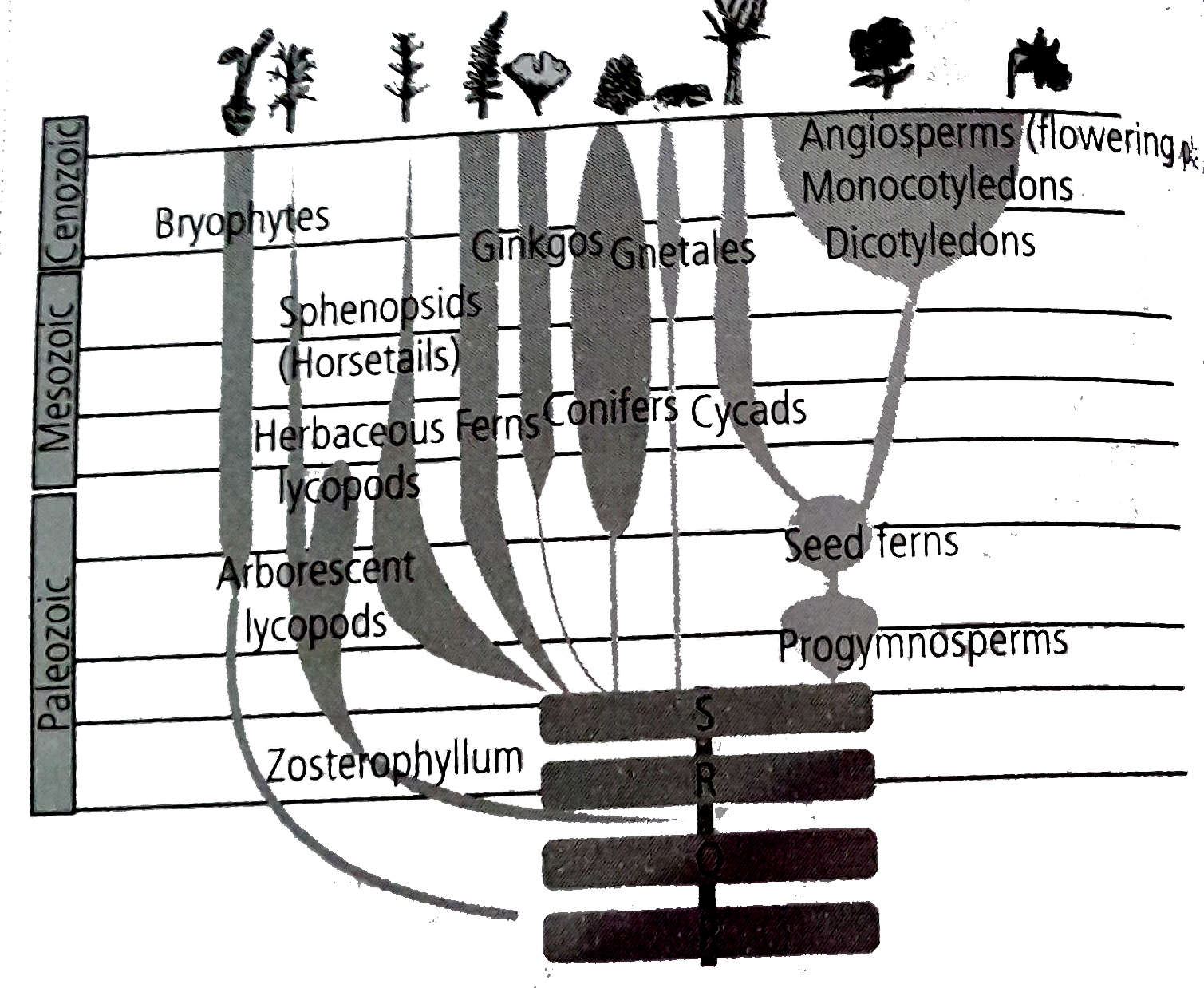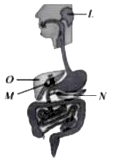Observe the given figure representing substances (P, Q, R and S) taken in or given out during photosynthesis and select the incorrect option regarding them.

Q could be the gas which is fixed through photosynthesis to form carbohydrates whereas P could be the gas which is used by plants in respiration
P is the gaseous by-product of photosynthesis whereas S is carbohydrate formed by plants through photosynthesis.
Q is taken up by plant leaves directly from atmosphere through minute stomata present in them whereas R represents water absorbed from soil through plant roots.
R and S show unidirectional movement within the plant body, i.e., from source to sink.
The correct Answer is:D
Substances P, Q, R and S could be oxygen, carbon dioxide, water and starch respectively. R shows unidirectional movement while S shows bidirectional movement within the plant body.
Topper's Solved these Questions
- NSO QUESTION PAPER 2018-19 SET ABOOK - SCIENCE OLYMPIAD FOUNDATION CHAPTER - NSO QUESTION PAPER 2018-19 SET AEXERCISE - ACHIEVERS SECTION
4 Videos
- NSO QUESTION PAPER 2018- 19 SET - BBOOK - SCIENCE OLYMPIAD FOUNDATION CHAPTER - NSO QUESTION PAPER 2018- 19 SET - BEXERCISE - ACHIEVERS SECTION
3 Videos
- NSO QUESTION PAPER 2019- 20 SET - BBOOK - SCIENCE OLYMPIAD FOUNDATION CHAPTER - NSO QUESTION PAPER 2019- 20 SET - BEXERCISE - ACHIEVERS SECTION
2 Videos
Similar Questions
Knowledge Check
Study the given and select the incorrect option regarding this.
 AThe figure represents chemiosmotic ATP synthesis by oxysomes where X is the mitochondrial matrix and Y is the inner mitochondrial membrane.BEnzyme required for ATP synthesis is ATP synthase, considered to be the complex,-V of ETSCThe figure represents oxidative phosphorylation which is the synthesis of energy rich ATP molecules with the help of energy liberated during oxidation of reduced co-enzymes (NADH−FADH2) produced in respirationDATP synthase becomes active only when there is a proton gradient having higher concentration of protons (H+) on the inner side (F1 side) as compared to the outer side (F0 side).
AThe figure represents chemiosmotic ATP synthesis by oxysomes where X is the mitochondrial matrix and Y is the inner mitochondrial membrane.BEnzyme required for ATP synthesis is ATP synthase, considered to be the complex,-V of ETSCThe figure represents oxidative phosphorylation which is the synthesis of energy rich ATP molecules with the help of energy liberated during oxidation of reduced co-enzymes (NADH−FADH2) produced in respirationDATP synthase becomes active only when there is a proton gradient having higher concentration of protons (H+) on the inner side (F1 side) as compared to the outer side (F0 side).Select the incorrect option regarding the given figure
 AD is parietal lobe which registers sensory perceptionsBA is occipital lobe which decodes and interprets visual informationCB is temporal lobe which is associated with memory and emotionDC is cerebellum which controls muscular activities
AD is parietal lobe which registers sensory perceptionsBA is occipital lobe which decodes and interprets visual informationCB is temporal lobe which is associated with memory and emotionDC is cerebellum which controls muscular activitiesSelect the correct option regarding the given figure
 AD is eosinophil which is found more in asthama patientsBB is lymphocyte which helps in blood clottingCC is neutrophil which is phagocytic in natureDA is monocyte which release histamine, serotonin and heparin
AD is eosinophil which is found more in asthama patientsBB is lymphocyte which helps in blood clottingCC is neutrophil which is phagocytic in natureDA is monocyte which release histamine, serotonin and heparin

Refer to the given figure and select the incorrect option regarding it
View SolutionRefer to the given figure and select the correct option regarding it.

View SolutionChoose the correct option regarding the given figure

View SolutionRefer to the given figure and select the incorrect option regarding L−O

View SolutionRefer to the given figure and select the correct option regarding this.

View Solution


